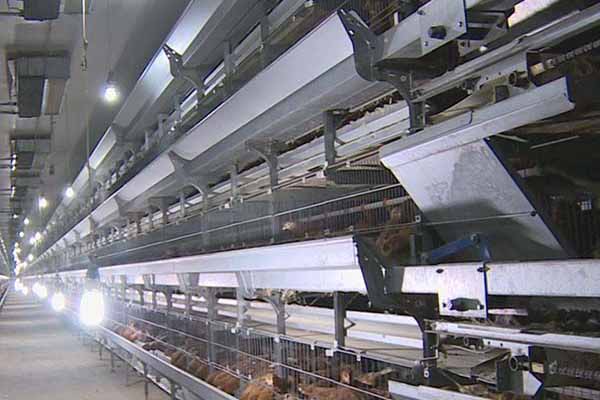User Evaluation Reference for Chicken Farm Equipment in Tanzania
Time : 2025-07-02
In the heart of Tanzania, where agriculture plays a pivotal role in the country’s economy, the poultry industry is a rapidly growing sector. The efficient use of equipment is crucial in enhancing the productivity and profitability of chicken farms. This article serves as a comprehensive user evaluation reference for chicken farm equipment in Tanzania, aimed at providing insights and guidelines for farmers and equipment manufacturers alike.
Introduction to Chicken Farming in Tanzania
Tanzania boasts a conducive environment for poultry farming, characterized by a favorable climate and a growing market for poultry products. The demand for chicken meat and eggs has surged, driving the need for efficient farm equipment. To ensure that farmers invest in the right equipment, a detailed evaluation is necessary.
Types of Chicken Farm Equipment in Tanzania
The first step in evaluating chicken farm equipment is understanding the various types available in the market. The following are some common equipment used in chicken farming in Tanzania:
– Feeding Systems: These systems include automated feeders, gravity feeders, and hand-feeding methods. The selection depends on the scale of the farm and the feeding preferences of the birds.
– Water Systems: Chickens require a constant supply of clean water. In Tanzania, nipple drinkers and automatic waterers are commonly used.
– Breeding Equipment: This includes incubators, brooders, and hatching boxes. These equipment play a crucial role in ensuring high hatchability rates and reducing chick mortality.
– Sanitation Equipment: Cleaning equipment, such as scrapers and vacuums, are essential for maintaining hygiene and preventing disease outbreaks.
– Chicken Handling Equipment: These include crowding stalls, catching pens, and shackles for easy handling of chickens.
Factors to Consider in Equipment Evaluation
When evaluating chicken farm equipment in Tanzania, the following factors should be taken into consideration:
– Quality: Equipment should be made of durable materials that can withstand the harsh conditions of the farm environment.
– Efficiency: Efficient equipment can lead to higher productivity, reduced labor costs, and lower feed conversion ratios.
– Reliability: The equipment should be reliable and require minimal maintenance to ensure continuous operation.
– Cost-effectiveness: The cost of the equipment should be justified by its performance and long-term benefits.
– Energy Consumption: In a country like Tanzania, where energy costs are high, equipment with low energy consumption is preferred.
– User Experience: The ease of use, safety, and comfort of the equipment should be considered to minimize the risk of accidents and improve efficiency.
User Evaluations: Insights from Farmers
To provide practical insights, we gathered feedback from chicken farmers in Tanzania regarding various chicken farm equipment. Here are some highlights:
– Feeding Systems: Farmers reported that automated feeders provide convenience and consistency in feeding. However, manual feeding systems are preferred by small-scale farmers due to their affordability.
– Water Systems: Nipple drinkers are popular for their reliability and ease of maintenance. Some farmers mentioned that they prefer gravity feeders for their simplicity and low maintenance requirements.
– Breeding Equipment: Incubators with temperature control features are considered the most efficient for ensuring high hatchability rates. Brooders with adjustable heat settings are preferred for different stages of the chickens’ development.
– Sanitation Equipment: Automated scrapers and vacuums are appreciated for their efficiency in maintaining cleanliness. However, some farmers believe that manual equipment is sufficient for small-scale operations.
– Chicken Handling Equipment: Catching pens and crowding stalls with gentle designs are preferred to reduce stress on the birds. Farmers have also found shackles to be a valuable tool for safe handling.
Recommendations for Chicken Farm Equipment in Tanzania
Based on the user evaluations and considerations, the following recommendations are made for chicken farm equipment in Tanzania:
– Invest in quality and reliable equipment to ensure continuous operation and minimize maintenance costs.
– Opt for energy-efficient equipment to reduce operating expenses.
– Consider the scale of the farm and budget constraints when selecting equipment.
– Prioritize user-friendliness, safety, and comfort in equipment design.
– Stay informed about technological advancements in chicken farm equipment to keep up with industry trends.
Conclusion
In conclusion, user evaluation is an essential factor in selecting chicken farm equipment in Tanzania. By considering the quality, efficiency, reliability, and user experience of equipment, farmers can enhance their operations and maximize their returns. Manufacturers should take user feedback into account when designing and producing chicken farm equipment to meet the needs of Tanzanian farmers.












